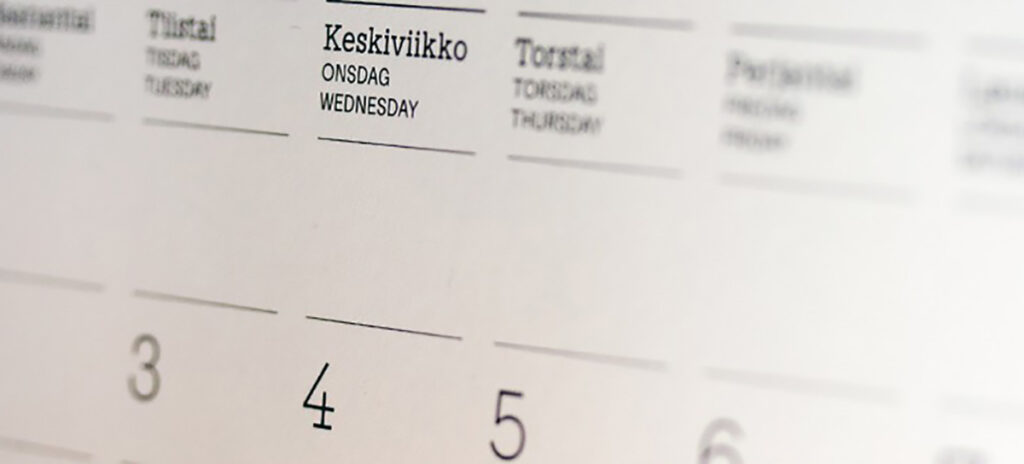So it’s time for you (and your web redesign team) to roll up your sleeves and start on writing content. And how hard can that be, right? You’ve got your stylebook, brand guide, and thesaurus in hand. You’re ready to knock out all those degree pages over the weekend at a coffee shop; typing away some fluid prose and eyeing that barista in the Hall & Oates shirt who (probably) doesn’t think you’re “deep” …
… Right?
Unfortunately, content (like that barista) isn’t afraid to bring you back down to Earth with a cold slap to the face.
“We’re going to need a bigger boat”
Take a look at this recently generated chart. It ballparks the maximum hours it might take for a small liberal arts university to complete its web content for a redesign:

Total those hours up and you get 1,258. To put it in another perspective, imagine you have only one person working on your redesign’s content. If they began January 1 and were to work a regular, 40-hour week, it would take them until early August to finish.
Remember that scene in “Jaws” when Roy Scheider says, “We’re going to need a bigger boat”? It’s like that, but you’re paddling into a mythical mega-shark’s turf with a kayak.
Oh … damn.
Precisely. To be fair, though, these are the greatest number of hours projected — it could take about half the projected time. But content can be a difficult task to get everyone on the same page. Budgeting just the right amount of time for content can be a rare occurrence — well, rare enough that the proverbial content steak is still mooing.
So why exactly does content suffer from under-budgeting? There are a couple of reasons:
It’s not “sexy”
Sure, everyone loves a pretty design and neat, new scrolling features — they’re some of the first things you notice. But that doesn’t necessarily mean they’re effective. Your content’s quality and quantity play a key role in your new website’s usefulness and the trust its users have in you. If they’re not finding what they need to quickly and easily, they’re leaving. And more often than not, they’re never coming back.
They think it’s easy
I’ve discussed before how many people make the mistake of thinking anyone can write, so they let everyone write. A lot of content contributors suffer from knowing their topic too well and do a poor job translating expertise to the layman. This leads to umpteen headaches late in the project, and a mad scramble to fix a ton of minor edits.
One of the best-kept secrets we’ve found for web writing is Hemingway, a web app that analyzes your text using the Automated Readability Index. It’s certainly not a catch-all for poor writing, but it does notify writers when they’re using big words that aren’t very web-friendly (fair warning: it doesn’t catch overused buzzwords.)

Even migration takes time
Just because some of content is “good to go” doesn’t mean it all appears on your new site like magic. Even if you’re using an automated content migration tool, it won’t address the issues of outdated information. Moreover, automated software is costly and often doesn’t migrate custom fields and posts. It takes someone to copy-paste, you know.
“Be prepared”
I wasn’t the greatest Boy Scout (I’m bad with knots and GREAT with fire!) but the organization’s motto “Be Prepared” is handy life advice. And although web design companies like NewCity provide a myriad of excellent resources (copywriting, content audits, and governance recommendations), content’s a team effort. If you or your organization is considering a website makeover, consider the following:
How much content do you currently have?
Refer to the graph in the beginning. There’s a simple way of finding that hourly projection. For good content (and it better be good), we found it takes about …
- 2-5 hours per page to do heavy edits or rewrite content.
- 1-3 hours per page to perform light edits.
- 30 minutes to 1 hour per page to migrate and format the approved and existing content onto the new site.
A qualitative content inventory points out where this good/bad/ugly/etc. stuff is on your existing site. You save handfuls of unwanted hours late in the project — or worse, a full-on “content dump.” This is when you push the exact same content over into a new design (ever put lipstick on a pig?) If there’s just too much for one person to curate/write, consider hiring extra writers and editors, even if it’s only temporary. They’ll go a long way in bringing you closer to that deadline.
Are you prepared to set deadlines and stick to them?
Great content has been around long before the web — take a look at centuries of print media. And like any job, deadlines are crucial for getting this done. Ask yourself if you’re ready to stick to your launch date by providing good content on time. If not, you might want to rethink this whole redesign thing.
Do you know where all your new content is?
If there’s one thing that’s heavily underrated in a project, it’s reducing minor annoyances so you can focus on the big problems. That’s why we recommend a web app called GatherContent to our clients.
This is your lifesaver in that big, wide content ocean. During the writing and editing phase, GatherContent serves as a central hub before all your content’s placed in the CMS. There’ll be no need to cry in the cubicle corner anymore because you can’t find those super-important Word, Pages, and TextEdit files. Then you can turn those sad tears into happy ones!
Perfect timing
Good content isn’t easy. It takes resources, hours, coffee, a thick skin, and a couple of security blankets (did I mention coffee?) But taking the time to generate good content is the difference between just another site on the web and an absolute home run.

